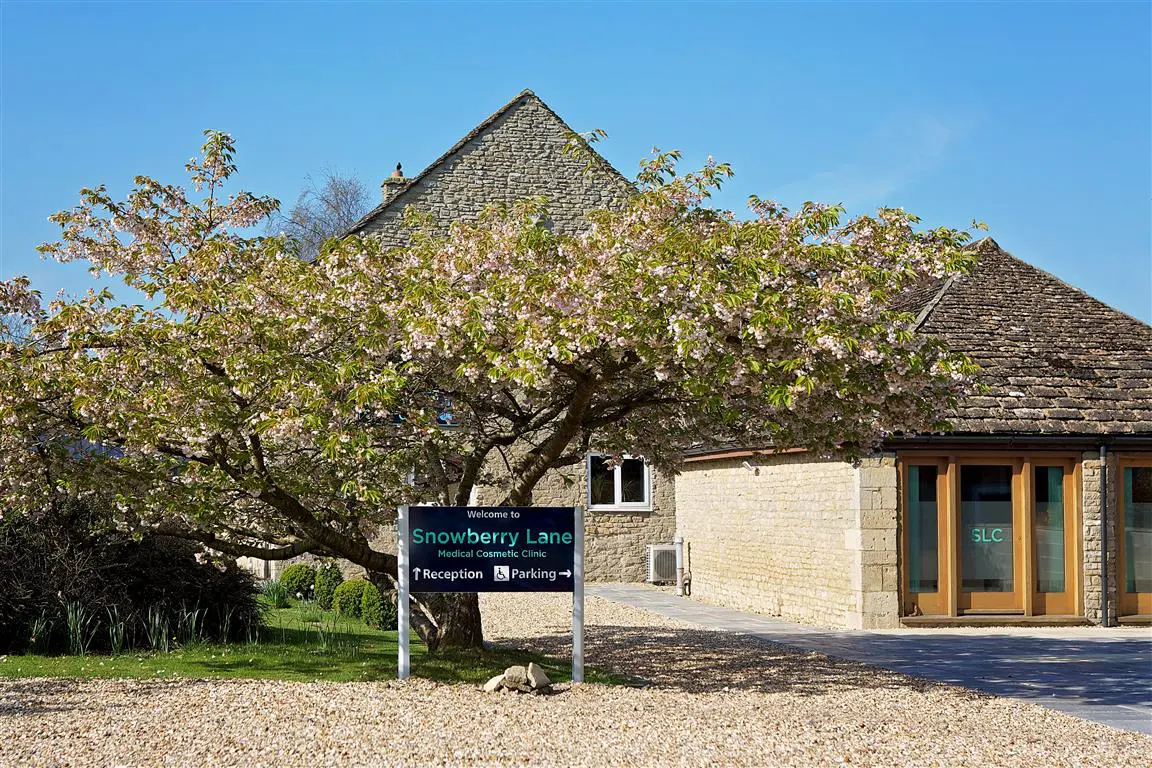sk:n clinic in Melksham, Snowberry Lane Clinic
Our lovely Snowberry Lane Clinic, part of the sk:n group, is located in Melksham and has continually been at the forefront of modern laser technology, cosmetic surgery and cosmetic treatments in the area. Founded by Dr Rupert and Ann Gabriel in 2003, Snowberry Lane Clinic is a centre of excellence for training medical professionals in body contouring. The clinic’s medical director, Dr Rupert Gabriel, is the leading UK expert in the field and a qualified cosmetic practitioner and GP. Snowberry Lane Clinic became a part of the sk:n group in 2020.
With a wide range of innovative aesthetic, skin, laser, dermatology and body contouring treatments, the team at Snowberry Lane Clinic are the skin experts you can trust.
How do I book my treatment?
Call the clinic team directly on 01225 700072 or email to [email protected]. Alternatively, you can fill in the form below.
Treatments on offer at Snowberry Lane Clinic
- Acne
- Anti-ageing injectables
- Dermal filler
- Dermatology
- Facial thread veins
- HydraFacial
- Laser hair removal
- Leg thread veins
- Lip fillers
- Mediweight
- Microneedling
- Milia removal
- Mole removal
- Profhilo®
- Rosacea
- Skin peels
- Skin tag removal
- Tattoo removal
- Wart and verruca removal
- HArmonyCa®
The sk:n promise
Our mission to deliver confidence through better skin is at the heart of everything we do. Our promise to you:
- Award-winning, unrivalled medical expertise. No one has more consultants, doctors and clinical expertise than sk:n, so no other dermatology provider comes close.
- Outstanding approach to client care for over 30 years. We’ve consistently delivered unrivalled, personalised client care, that’s always right for our clients. If you have a concern, you can trust us to solve it.
- Standards you can trust. Our market-leading medical, safety and training protocols and strict industry regulation means you can trust that your safety and care is our priority.
- We are the UK’s leading skin clinics. We’ve treated millions of clients, improving their self-confidence for the better – with some life-changing results.
Finding us at Ridgeway House, Melksham
Melksham Shurnhold Opening Times
Monday
9:00 - 7:30
Tuesday
9:00 - 7:30
Wednesday
9:00 - 7:30
Thursday
9:00 - 7:30
Friday
9:00 - 16:00
Saturday
8:30 - 13:30
Sunday
Closed
Clinic Address
Ridgeway House, 49 Shurnhold, Melksham, Wiltshire, SN12 8DF
Telephone
Finding us
By car:
If you’re travelling from the north, the main motorway link to reach the clinic is the M4, just take the A350 south of the motorway to reach us. If you’re travelling from the south, simply travel the A350 northbound. The A350 is 0.4 miles from the clinic, take the exit next to the Melksham Asda superstore.
By bus:
There is a bus stop a 3-minute walk away from the clinic located outside Blenheim House Care Home, the buses 14, 271, 272, 273 and X76 stop here.
By train:
The clinic is just 375m away from Melksham station. When arriving here by train all you need to do is turn right out of the station onto Bath Road. Just a very short walk along the road and we’re down to the left after Sampford Care Home
Request a callback
One of our friendly sk:n advisors will call you to book your consultation.
- More than 450 consultants, doctors, nurses and medical practitioners
- Regulated by the Care Quality Commission, Health Inspectorate Wales and Health Improvement Scotland
- Partner of the NHS
- Rated excellent by our clients on Trustpilot
- Strict safety and care protocols
